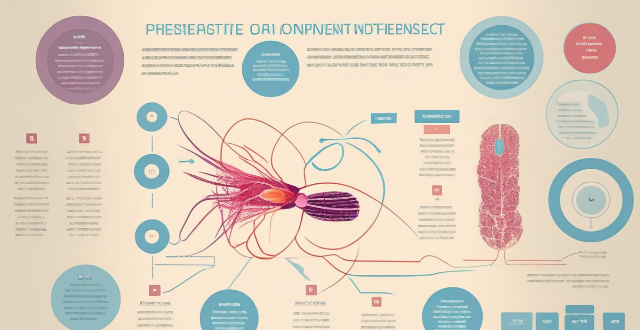Disease Origin

What are some common misconceptions about virus origin tracing ?
Virus origin tracing is a crucial aspect of understanding and responding to outbreaks. However, there are several misconceptions that people often have about this process. Here are some of the most common ones: 1. Viruses only arise from animals. 2. Trace back always leads to a single source. 3. Tracing the origin is straightforward. 4. All viruses are created equal. 5. Origin tracing is only about blame. 6. Origin tracing is a recent development. 7. Origin tracing can prevent all outbreaks. 8. Vaccines are not part of origin tracing. 9. Origin tracing is only for pandemics. 10. Scientists have all the answers.

What is the importance of virus origin tracing ?
Virus origin tracing is crucial for preventing future outbreaks, understanding transmission patterns, identifying vulnerable populations, improving surveillance systems, and promoting global health security. By understanding where and how viruses originated, scientists can develop strategies to prevent similar viruses from emerging in the future. Tracing the origin of a virus also helps us understand its transmission patterns, which is essential for developing effective prevention and control measures. Additionally, virus origin tracing can help identify vulnerable populations that may be at higher risk of infection or severe illness, allowing public health officials to target prevention and treatment efforts to those who need them most. Finally, tracing the origin of a virus can improve surveillance systems for infectious diseases and promote global health security by helping countries work together to prevent and respond to emerging threats.

How can we trace the origin of a virus ?
This article explores the methodologies and techniques used to trace the origins of viral outbreaks, using examples such as MERS-CoV, SARS-CoV-2, and other significant viruses. It discusses epidemiological investigations, genetic sequencing and analysis, ecological investigations, molecular clock analysis, and viral culture and isolation as key approaches in this process. By combining these methods, scientists can build a comprehensive picture of a virus's origins, which is vital for preventing future outbreaks and developing effective treatments and vaccines.

What are the challenges in tracing the origin of viruses ?
The origin of viruses is a complex and intricate subject, involving various disciplines and advanced technology. Researchers face challenges such as genetic diversity, asymptomatic hosts, environmental reservoirs, international travel, limited historical data, political and social factors, funding constraints, technological limitations, legal and ethical concerns, and public perception. Understanding viral origins is crucial for preventing future outbreaks and developing effective treatments. Overcoming these challenges requires international cooperation, interdisciplinary approaches, and ongoing investment in science and technology.

How can international cooperation aid virus origin tracing efforts ?
The text discusses the importance of international cooperation in virus origin tracing efforts. It outlines various ways in which collaboration can aid this process, including sharing information and data through global databases and real-time reporting systems; pooling resources and expertise by establishing centralized laboratories and training programs; coordinating responses and policy making through global health organizations and international agreements; and building public trust through transparent communication and community engagement. The text emphasizes that successful virus origin tracing requires a multidisciplinary approach and the involvement of experts from different fields. It highlights the need for transparency, openness, and ethical considerations in research activities to ensure cultural sensitivity and community benefits. Overall, the text underscores the significance of international cooperation in unraveling the mysteries of virus origins and preventing future pandemics.

How can advancements in technology aid in more accurate virus origin tracing ?
The article discusses the role of technology in tracing virus origins, highlighting various techniques such as genomic sequencing, phylogenetic analysis, data mining, machine learning, satellite imagery, and remote sensing. These methods provide powerful tools for understanding how viruses evolve and spread over time, as well as identifying areas at risk for future outbreaks. The advancements in technology have revolutionized our ability to trace the origins of viruses, offering valuable insights into the ecological factors that contribute to virus emergence.

Can exercise reverse heart disease ?
Heart disease is a major cause of death worldwide, and it can be devastating to those affected. While there are many treatments available for heart disease, including medication and surgery, some people wonder if exercise can reverse the damage caused by heart disease. There is evidence that regular exercise can help prevent and manage heart disease by improving cardiovascular health, managing weight, lowering blood pressure, improving cholesterol levels, and reducing stress. However, there is no conclusive evidence that exercise can completely reverse heart disease. Despite this, there are still many benefits to regular exercise for heart health. If you have been diagnosed with heart disease or are at high risk for developing it, talk to your doctor about starting an exercise program. They can help you create an exercise plan that is safe and effective for your individual needs and goals.

Is it possible for a virus to have multiple origins ?
Viruses are elusive entities with complex evolutionary histories, and understanding their origins is crucial for public health and disease control. While traditional theories suggest singular origins for viruses, evidence supports the possibility of multiple origins through processes like recombination, host switching, environmental influences, zoonotic events, genetic exchange with host cells, ancient viral lineages, and laboratory manipulation. Recognizing these complexities is essential for advancing scientific knowledge, improving public health outcomes, and enhancing our ability to respond to emerging infectious diseases.

How do vaccines work to protect against disease ?
Vaccines protect against disease by introducing a small amount of the pathogen into the body, triggering the immune system to produce antibodies that protect against future infections with the same pathogen. There are several types of vaccines with unique mechanisms of action and effectiveness against specific pathogens. The development of vaccines is a complex process requiring extensive testing and research, but they have been shown to be highly effective at preventing serious diseases.

What are some good gluten-free food options for people with celiac disease ?
Celiac disease is an autoimmune disorder that damages the small intestine and requires a strict gluten-free diet. Good gluten-free food options for people with celiac disease include fruits and vegetables, meat and fish, gluten-free grains and starches like quinoa and brown rice, dairy products, nuts and seeds, gluten-free flours and baking mixes, and gluten-free snacks and beverages like popcorn and juices.

How does climate change influence the distribution and survival of disease-carrying organisms ?
This text discusses the influence of climate change on the distribution and survival of disease-carrying organisms, highlighting how altered habitats, changes in reproduction and life cycle, and altered behavior and transmission rates contribute to the spread of diseases. It further provides examples of specific disease-carrying organisms affected by climate change and suggests mitigation strategies such as surveillance, control measures, public health education, and research to address these challenges.

How does predictive analytics help in disease prevention and management within the healthcare system ?
Predictive analytics in healthcare can significantly improve disease prevention and management by identifying patterns and trends in patient data. It offers benefits such as early intervention, personalized treatment plans, enhanced operational efficiency, and informed decision-making. Applications include disease surveillance, chronic disease management, and patient care optimization. However, challenges like data privacy, quality, and the need for skilled data analysts must be addressed to fully realize its potential.

How do scientists use epidemiological data to trace virus origins ?
Epidemiology is the study of how diseases spread among populations. When a new virus emerges, scientists use epidemiological data to trace its origins. This involves several steps: collection of data about the disease, analysis of data to identify patterns, genomic sequencing to determine the relationship between viruses, field investigations to gather more information, and collaboration with other scientists to build a comprehensive picture of the virus's origins. By understanding how a virus emerged and spread, scientists can develop better strategies for preventing and controlling future outbreaks.

Does high-intensity interval training (HIIT) have specific benefits for chronic disease prevention ?
High-intensity interval training (HIIT) offers numerous benefits for chronic disease prevention, including improved cardiovascular health, enhanced glucose control, reduced inflammation, increased muscle mass and strength, and improved mental health outcomes. To incorporate HIIT into a healthy lifestyle, start slowly, choose the right exercises, include other forms of exercise, and consult with a health professional.

Has the COVID-19 virus's origin been successfully traced ?
The origin of the COVID-19 virus, known as SARS-CoV-2, has been a subject of intense investigation since the outbreak began in 2019. Scientists generally agree that the virus likely originated from animals, possibly bats with pangolins as an intermediate host, before making the jump to humans. This conclusion is supported by genetic analysis and studies of live animal markets where the initial human cases were linked. The lab accident hypothesis, suggesting the virus escaped from a laboratory, has not been substantiated by evidence. Ongoing research continues to explore the exact pathway of the virus's emergence from animals to humans.

How much exercise is needed per week to prevent chronic disease ?
Chronic diseases are a major cause of death and disability worldwide. Regular physical activity can help reduce the risk of developing chronic diseases such as heart disease, diabetes, and some types of cancer. According to the World Health Organization (WHO), adults should aim to do at least 150 minutes of moderate-intensity aerobic exercise or 75 minutes of vigorous-intensity aerobic exercise each week, along with muscle-strengthening activities at least twice a week. However, the amount of exercise needed to prevent chronic diseases may vary depending on individual factors such as age, sex, body weight, and overall health status. It's recommended that people try to incorporate at least 30 minutes of moderate-intensity aerobic exercise into their daily routine, along with strength training exercises whenever possible.

What role does genetic sequencing play in virus origin tracing ?
Genetic sequencing is an essential tool for tracing the origin of viruses, particularly when it comes to identifying the source of outbreaks and understanding how they spread. By analyzing the DNA or RNA molecules present in a sample, researchers can determine its genetic makeup and compare it to known viral genomes to identify similarities and differences. This process has helped identify patterns that suggest common ancestry or recent transmission events, leading to better prevention and control measures. However, challenges such as data volume and accuracy still need to be addressed.

Can you provide examples of how different cultures have contributed to the evolution of various sports ?
Sports have evolved over time, and different cultures have contributed to this evolution in various ways. The game of cricket originated in south-eastern counties of England and has since spread worldwide, particularly in the Commonwealth. Baseball was developed in the United States during the early 19th century and has become one of the country's national sports. Soccer can be traced back to an ancient Chinese game called "cuju". However, the modern version of the game that we know today originated in England in the 19th century. Basketball was invented by Dr. James Naismith in Springfield, Massachusetts in 1891. Sumo wrestling is a traditional Japanese sport that dates back thousands of years. Australian Rules Football (AFL) is a unique sport that originated in Melbourne, Victoria in the mid-19th century.

How do climate change and environmental factors impact virus origin tracing ?
Climate change and environmental factors play a significant role in virus origin tracing by affecting host and vector distribution, human activities, and interactions with the environment. Understanding these impacts is crucial for effective surveillance and research efforts to prevent and control infectious diseases.

How does consistent physical activity affect the immune system in relation to chronic disease prevention ?
The article discusses the impact of consistent physical activity on the immune system and its role in preventing chronic diseases. It explains that regular exercise can increase the number and activity of immune cells, reduce inflammation, and improve overall health. The article also provides recommendations for exercise and emphasizes the importance of incorporating physical activity into one's lifestyle to prevent chronic diseases and improve well-being.

What is the history behind the origin of street food ?
The origin of street food can be traced back to ancient times, with evidence of vendors selling food and drinks in public spaces in ancient Middle Eastern and Asian civilizations. Over the centuries, street food has evolved and diversified, reflecting changing social, economic, and cultural dynamics. In the Roman Empire, a well-developed system of food markets and street vendors sold a variety of dishes. During the Middle Ages, street food became more prevalent in Europe due to the growth of fairs and markets. In Renaissance Italy, street food became more sophisticated and diverse, with vendors selling pizza, pasta, and gelato. Early American settlers relied on street food for sustenance, while immigrants brought their own street food traditions with them. In recent decades, globalization has led to the spread of street food cultures around the world, and the rise of food trucks has revolutionized the industry. Today, street food continues to evolve and adapt to changing tastes and trends while preserving its rich heritage and diversity.

Can using a health management app reduce the risk of chronic diseases such as diabetes or heart disease ?
Health management apps can help reduce the risk of chronic diseases by monitoring health metrics, providing insights, promoting healthy habits, and issuing reminders. However, over-reliance, inaccuracies, and privacy concerns are downsides to consider. While beneficial, these apps should not replace professional medical advice.